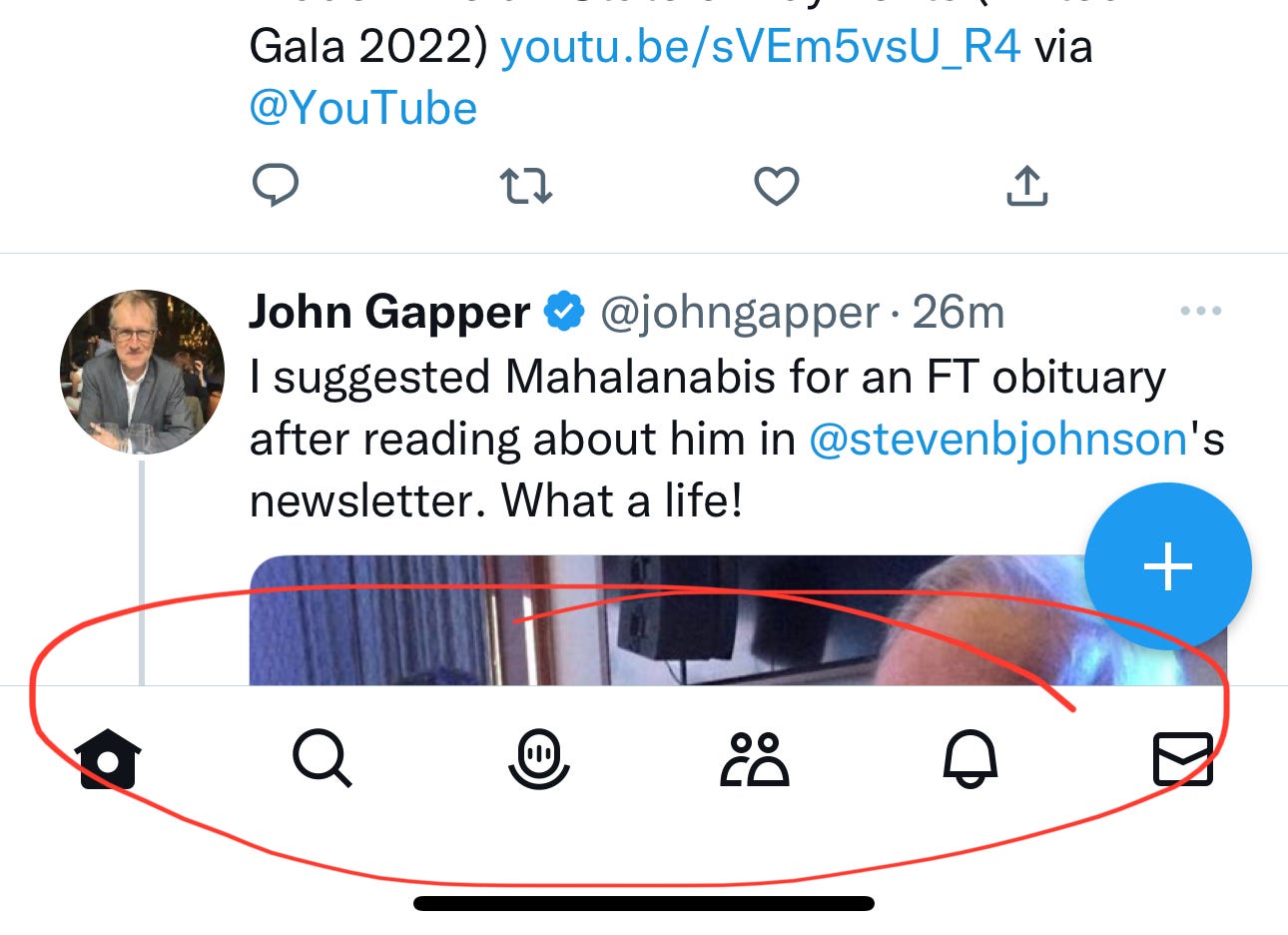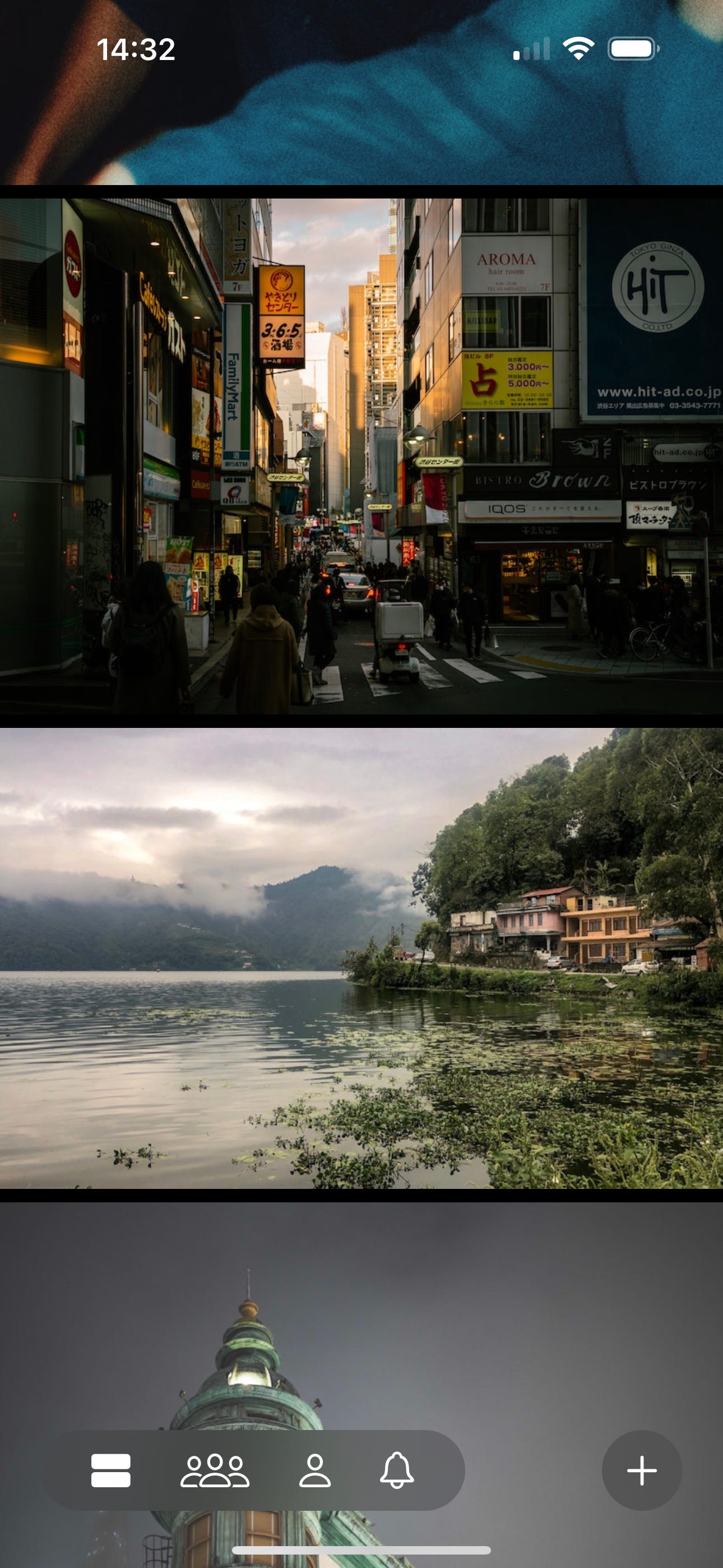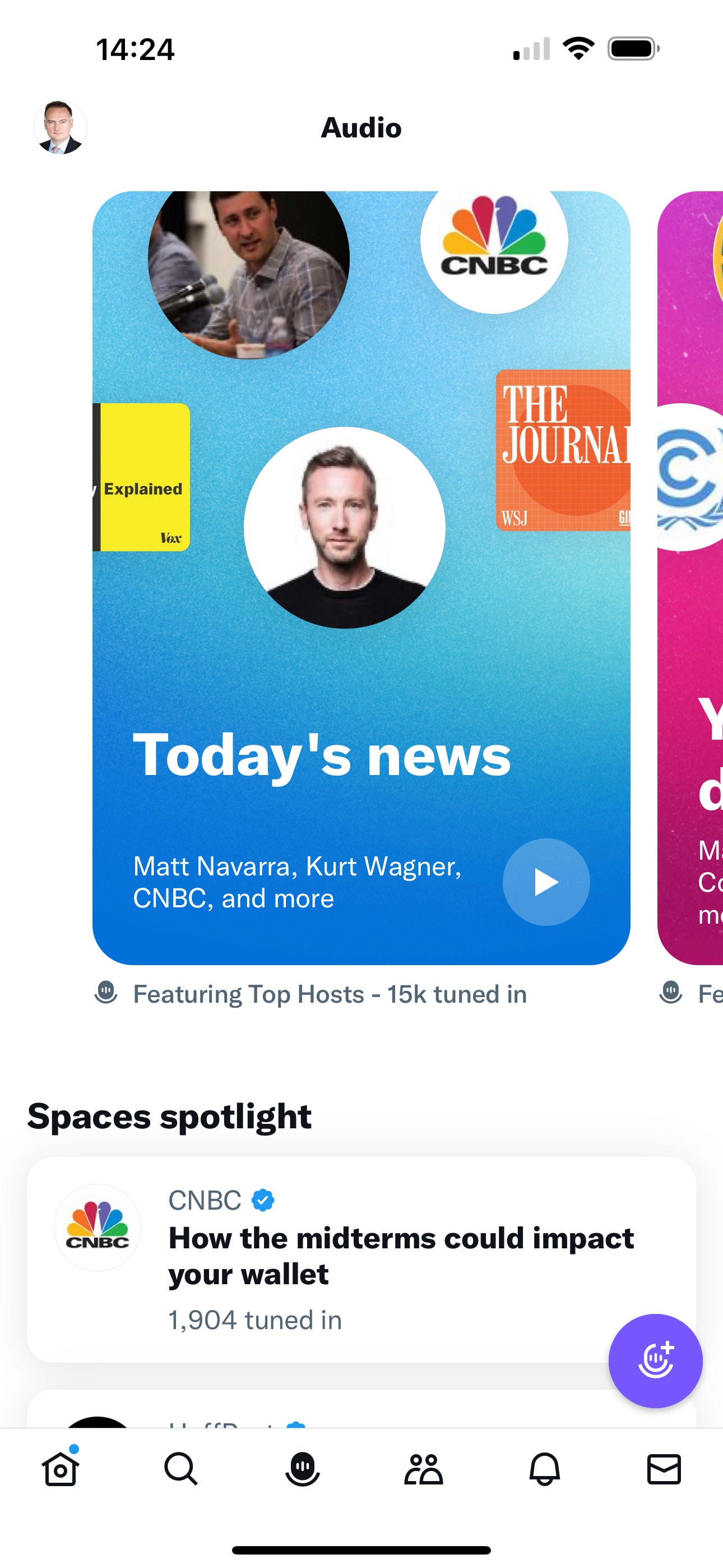Issue № 62 | London, Sunday 6 November 2022
I write IMTW for you and it’s a pleasure to do so. But this week, my unhealthy addiction to Twitter has prompted me to forgo my usual structure and write for someone else entirely: Elon Musk. If by chance you’re not the world’s richest man or don’t share my fanatical obsession with the most promising social medium, I suggest you delete this email now and get on with your day. I won’t be offended and we’ll talk again next weekend. Otherwise…
Read on to learn why:
① Trust is paramount.
② Brands need safety.
③ Instagram refugees and advertisers alike will flock to a photo tab.
④ TikTok fans fearful of CCP influence would love an alternative.
⑤ A feature-rich messaging competitor has tremendous potential.
⑥ There is enormous value in reaching large audiences.
⑦ Only narcissists will pay for a blue tick.
What's new
During a tumultuous week for Twitter, as long-time fans prematurely lamented its loss, advertisers baulked, Twitter employees left in droves (some jumped, most were pushed), and Musk threw one idea after another at the wall to see what would stick, I jotted down a plan to save my favourite social medium:
Elon, bear with me and I’ll tell you what my scribblings mean.
Do no harm
Trust is paramount
The change you’ve proposed that has raised the most eyebrows so far is the ludicrous idea of charging for ‘verification’, those little blue ticks that reassure other users that ‘this person is who they say they are’.
① Originally rolled out to those who were at risk of impersonation, the rules by which they are granted today are murky at best and, perhaps as a result, the famous blue ticks have become something of a status symbol amongst the twitterati. But their original concept is sound and fundamental: you need to be able to trust that certain accounts are legitimate. When POTUS tweets, I need to know it’s definitely him and not a sulky teenager with a penchant for mischief (admittedly, with the White House’s last resident, that distinction was paper thin.)
If anyone can buy a blue tick, they lose their credibility - because when everyone is special, no one is. Keep the blue ticks free. Be transparent about how and to who they’re granted . And accelerate their roll out. The platform needs more trust, not less.
Brands demand safety
There is certainly nobility in protecting free speech. But being an ‘absolutist’ about anything is fraught with danger. And free speech doesn’t mean that everyone is free to say anything they want. As we talked about last week, there are some things - maybe a handful of things - that should never be said at all.
② Even if you care not one jot for protecting a civilised society, this should matter to you because it matters to your customers. They need the safety of knowing that their adverts won’t appear next to hate speech.
The “content moderation council” you’ve suggested sounds like a good idea but please don’t take you eye off the ball in the meantime. Hate and disinformation should be stamped out the moment they raise their heads. Don’t let your philosophical predilection for free speech cloud your judgement.
Make product great
I know that when you talk about turning Twitter into X, the super app, you’re thinking about payments and crypto. I find that prospect interesting and hope you get there. But there’s some low-hanging fruit to pick first.
When I look at the Twitter app’s tabs today, I see little but wasted opportunity:
Move the search and notifications tabs to buttons at the top of the app where they belong and replace them with showcases for features that capitalise on your competitors’ weaknesses.
Your tab bar - the core elements of Twitter’s value - should consist of:
Home: your chronological timeline of all the content from people you follow
Photos: the beautiful experience Instagram used to provide
Videos: a TikTok clone for those that don’t like being controlled by the CCP
Spaces: Twitter at its spontaneous, interactive best - in audio form
Communities: focused discussions with like-minded people
Direct Messages: WhatsApp for the rest of us
This would enable you to make Twitter a truly great app.
Be a better Instagram
I touched on this the last time I wrote a rant about Twitter: Zuckerberg has decimated Instagram. Those of us who love sharing and browsing beautiful photographs, unencumbered by other media, now have to use Glass. It’s a wonderful app but it lacks Twitter’s social graph and huge user base.
③ That’s why Twitter’s second tab should be devoted to photos. Throw a few filters into the mix and present them in an elegant timeline. Instagram refugees and advertisers alike will flock to it.
Be a better TikTok
I’m no fan of short, portrait-oriented video but TikTok’s uncontested dominance of social media shows us that I’m very much in the minority. Its reach and user base make even Facebook cower. And I’ll admit that its algorithm’s uncanny ability to serve up tailored, compelling content to each individual user is impressive. There’s a fly in the ointment though: the Chinese Communist Party.
④ Discomfort at TikTok’s ability to harvest data and influence its users on behalf of China continues to grow (in the US, it’s increasingly being talked about as a threat to national security) so there’s a huge opportunity to offer a Western alternative.
Elon, get your army of boffins working on replicating that magical algorithm and then put some jump cables on Vine. That’s your third tab.
Be a better Clubhouse
If Clubhouse’s meteoric rise and Dickensian fall teach us anything it’s that audio is a feature, not a product. But that doesn’t mean there isn’t value in it. Twitter Spaces are fine but they desperately need better discovery and promotion.
At the moment the Audio tab looks like a poor man’s podcast app. Put the emphasis instead on the live experience, de-emphasise the big media brands, make it easy to browse topics, showcase Spaces hosted or attended by people I follow. That’s your fourth tab.
Be a better WhatsApp
Twitter’s direct messages are functional enough. But remember that super app you admire so much, WeChat? It started as a messaging app.
⑤ The world loves messaging. While iMessage still dominates in the US, WhatsApp is the king pretty much everywhere else. But iMessage is limited to Apple users and people increasingly want cover from Zuckerberg’s preying eyes. That’s why I’d wager there’s scope for a feature-rich competitor to make its mark. That’s your sixth tab.
Charge for value
Step 2 complete. You’ve built a great product. Now we get - quite literally - to the bottom line. You need to make money from it. And you deserve to. But, Elon, charging users for blue ticks isn’t the answer (I refer you to step 1).
People and brands are, however, perfectly happy to pay for value. So, we need to figure out where the value in Twitter is.
I don’t see any reason to walk away from your advertising business. After all, you’ve just created a slew of interesting new options for your advertisers - including photos, videos and audio, as well as using your revamped messenger functionality for interacting directly with their customers.
But there’s yet more money on the table: charge users with many followers.

⑥ For years now, I’ve used Twitter as part of integrated marketing programmes. At SWIFT and Deutsche Bank we reached tens if not hundreds of thousands of people with one click. At Quant, a new brand still relatively unknown, we recently surpassed 100,000 followers. That’s the kind of value that most companies would expect to pay for on almost any other channel. Why not on social media?
So, charge users in tranches, according to how many followers they have. Keep a generous free tier (say, anything up to 100,000 followers) and then charge for three tranches above that. Something like:
100,000 - 300,000 followers = $500 per month
300,000 - 1m followers = $5,000 per month
1m+ followers = $10,000 per month
Users unwilling to pay would still have full use of the platform but their followers would be capped. Those that value reaching a large number of followers (I’m thinking mostly of big brands and celebrities but anyone with a comms budget is a prospect) will be both able and happy to pay.
I’d recommend granting two exceptions to this rule:
verified journalists tweeting in a personal capacity, because of the collective value they bring to the platform; and
charities, because your image could do with a little rehabilitation right now, Elon.
What to do about it
Get help
Visit InMarketing, my resource library for leaders in finance or technology who want to innovate, interact and influence.
Join my InMarketing Twitter community, where you can ask questions of me and my fellow senior marketing practitioners.
Share
Elon, if you found this useful or know someone who would, please share it. It would really help me to grow the community of regular IMTW readers.
Off cuts
The stories that almost made this week’s newsletter.
FINANCE
👮🏻 FCA shuts down record 4,000 rogue financial promotions
😍 Credit Suisse bankers learn to love their new boss
🔪 HSBC to launch Orion blockchain bond tokenization platform
🧑🏻💻 UBS issues world's first publicly traded digital bond
🧀 Swiss National Bank records worst losses in its history
TECHNOLOGY
⚠️ What went wrong with Snap, Netflix and Uber?
⛓️ DLT is finding favour among financial market infrastructures and participants
💱 CBDCs could reduce FX transaction speeds to 10 seconds, NY Fed says
🤑 It’s time to start paying with crypto on Revolut
🏢 Starling Bank tops 2,000 employees, opens new London office
MEDIA & MARKETING
📰 The New York Times banks 180k new subscribers thanks to bundle approach
🪜 Eight steps to an effective social media strategy
🎬 YouTube may have misinformation blind spots, researchers say
💬 Substack targets Twitter with launch of discussions feature, Substack Chat
⏰ Tiktok’s new privacy update lets staff across the world access your data
The last word
⑦ Stephen King on the idea of Twitter charging for verification:
“Fuck that, they should pay me.”
Don’t settle for marketing.
Strive for InMarketing: innovate, interact, influence.
Wishing you a productive week,
P.S. I had supper at Isabel this week and can report that the denizens of Mayfair continue to consume conspicuously, utterly untroubled by the ‘cost of living crisis’.









